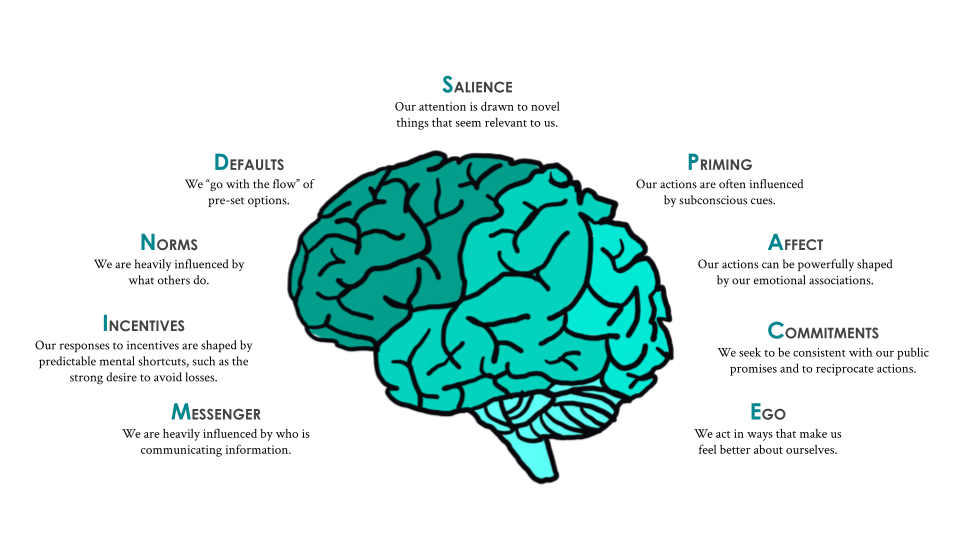How Does Society Influence One's Behavior?
Behavioral economics and nudge theory gets a bad reputation. Sometimes vilified as dark marketing, government interference, or self-serving paternalism, fears arise around the notion that such interventions infringe on individual rights.
Yet, the fact is that we very rarely make choices in isolation of outside influences.
"We are social beings, and thus, our choices are made in the context of social connections, personal relationships, and physical environments — all of which will have been influenced by other people."
Indeed, the very concept of behaviorally-influenced public policies, and the extent to which these can be effective, demonstrates how individuals respond to outside agency. Behavioral economics harnesses these human insights, and works on the premise that — both to help people individually and to have a positive impact on the widest number of people — individuals’ behavior can be influenced without restricting their liberties.
For example, when it comes to taxes on alcohol or sugar consumption, some argue that their body is their own, and thus they should be left to make their own decisions. To be sure, public health policy aims to provide the individuals with the utmost freedom in cases where the negative consequences of their behaviors can be internalized. However, it also holds that if there are externalities, or public costs, to these behaviors (as there often are), the government is justified in campaigning to reduce the incidence of such behaviors. Thus, it is not only that social forces influence our behaviors, but that, in turn, our behaviors impact societal outcomes.
The UK’s Behavioral Insights Team (BIT) use the framework MINDSPACE to aid the application of behavioral science to the policymaking process. They argue that the ideas captured in the mnemonic are ‘nine of the most robust influences on our behavior.’ These are as follows:
Whether it is acting in line with social norms, seeking ways to act that make us look good to others, or relying on category and perception to form our opinions of those with whom we interact, it is clear that these social components have an outsized impact on our individual behaviors. Let’s look at a few examples:
About the Author
Francesca Baker-Brooker
Francesca Baker is fascinated by people, and their experience of the world. A researcher with 9 years’ experience, she is highly curious, and combines this with a sense of creativity and communication skills to explore the world and tell the stories that matter.
About us
We are the leading applied research & innovation consultancy
Our insights are leveraged by the most ambitious organizations
“
I was blown away with their application and translation of behavioral science into practice. They took a very complex ecosystem and created a series of interventions using an innovative mix of the latest research and creative client co-creation. I was so impressed at the final product they created, which was hugely comprehensive despite the large scope of the client being of the world's most far-reaching and best known consumer brands. I'm excited to see what we can create together in the future.
Heather McKee
BEHAVIORAL SCIENTIST
GLOBAL COFFEEHOUSE CHAIN PROJECT
OUR CLIENT SUCCESS
$0M
Annual Revenue Increase
By launching a behavioral science practice at the core of the organization, we helped one of the largest insurers in North America realize $30M increase in annual revenue.
0%
Increase in Monthly Users
By redesigning North America's first national digital platform for mental health, we achieved a 52% lift in monthly users and an 83% improvement on clinical assessment.
0%
Reduction In Design Time
By designing a new process and getting buy-in from the C-Suite team, we helped one of the largest smartphone manufacturers in the world reduce software design time by 75%.
0%
Reduction in Client Drop-Off
By implementing targeted nudges based on proactive interventions, we reduced drop-off rates for 450,000 clients belonging to USA's oldest debt consolidation organizations by 46%





















